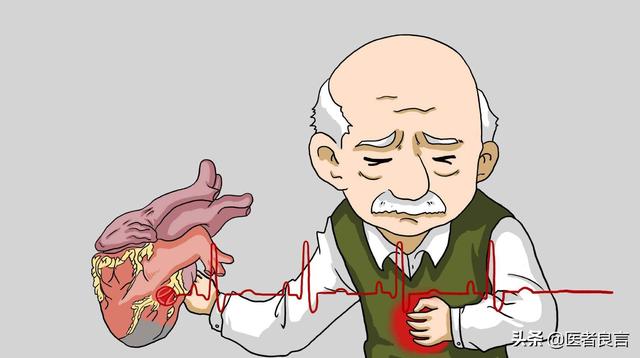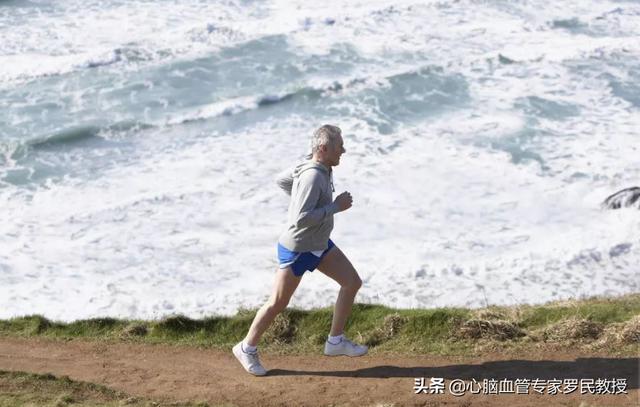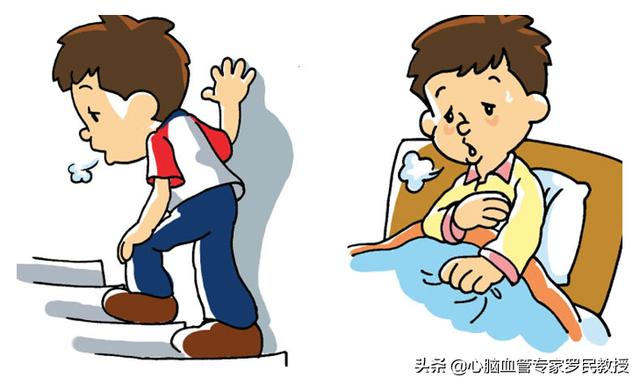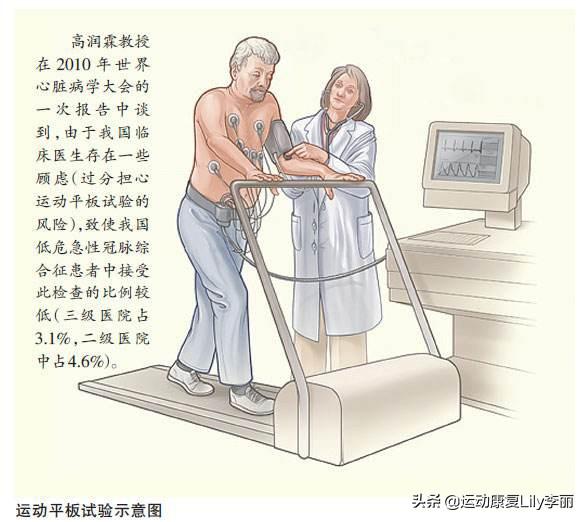Is it better for coronary heart patients to exercise or not to exercise and what should they do?
Coronary heart disease is one of the most common cardiovascular diseases. The essence of coronary heart disease is actually a lifestyle disease, and many of the risk factors for coronary heart disease, including high blood pressure, dyslipidemia, diabetes mellitus, smoking, etc. are closely related to lifestyle. Therefore, the most effective treatment program for coronary heart disease is a comprehensive model that combines drug therapy and lifestyle modification.
At present, the medical profession has long reached a consensus: exercise is not only a means of fitness, but also a good measure to prevent and cure diseases.
Through regular and moderate exercise, the endothelial function of blood vessels can be improved, atherosclerotic plaques of coronary arteries can become more stable, cardiac function can be enhanced, and the quality of life of the patients can thus be improved, and hospitalization and mortality rates can be significantly reduced. Therefore, there is no doubt that appropriate exercise is beneficial to patients with coronary heart disease!
Theoretically, the magnitude of exercise intensity has different effects on cardiac and vascular function, physical fitness, and prognosis, with greater cardiovascular benefits associated with greater exercise intensity within a certain range, but also accompanied by increased exercise risk. For patients with coronary artery disease combined with ischemic cardiomyopathy, poor cardiac function, or unstable control of blood pressure and heart rate, excessive intensity exercise may pose a certain risk. There is even the occurrence of acute myocardial ischemia or even acute myocardial infarction caused by excessive exercise.
Exercise for people with coronary artery disease is still very important:
The use of exercise as a therapeutic tool in patients with coronary artery disease requires two conditions: one, safety; and two, effectiveness. Therefore, in order to ensure the safety of exercise in patients with coronary artery disease, the first step is to assess the risk of exercise, which should be done under the guidance of qualified and experienced physicians. Exercise load testing and risk stratification are the key steps in risk assessment, and are generally categorized as low, medium, and high risk.
The patient should then be stratified according to risk and an individualized exercise program should be developed based on the principles of exercise prescription. Of course, the following basic principles can be used as a reference:
Exercise Frequency: Aerobic exercise is guaranteed at least 3 to 5 times a week, preferably every day;
Forms of exercise: Aerobic exercise should be the mainstay, supplemented by impedance exercise;
Exercise time: For patients with heart disease, 30 to 60 minutes of daily exercise is most appropriate; for patients who have just had a cardiovascular event, you can start with ten minutes a day and gradually increase;
Many of my friends are wondering: is it better to continue to exercise and workout for coronary heart disease? Or is it better to let the heart rest well? Dr. Wang's patients each person discharged from the hospital, will explain clearly, should be how to diet, how to take medication, how to review, how to exercise exercise. But why can some coronary artery disease exercise and some coronary artery disease not exercise? Of course you can exercise, but to be specific: 1, what exercise is good for the heart. 2, different people exercise intensity is not the same. 2, different people exercise intensity is not the same. 3, indeed, some coronary heart disease is not recommended exercise. First, aerobic exercise Only aerobic exercise is beneficial to the heart. Simply put, low-intensity, long-duration exercise is aerobic exercise, such as walking, jogging, long-distance slow swimming, cycling, dancing, etc. These are all aerobic exercise. Aerobic exercise is effective in exercising the heart, lungs and other organs and can improve cardiovascular and lung function. Why is this? When we exercise, muscle contraction requires a lot of energy and oxygen, because the demand for oxygen increases, the number of contractions of the heart, the amount of blood sent out by pressure, the number of breaths, the degree of contraction of the lungs, and so on increase. When exercise is sustained and the muscles contract for a long period of time, the heart and lungs must work hard to provide oxygen to the muscles as well as to transport waste products away from the muscles. This continuous demand improves cardiorespiratory endurance. Long-term adherence to aerobic exercise can, increase the number of hemoglobin in the body, improve body resistance, anti-aging, enhance the efficiency of the cerebral cortex and cardiopulmonary function, increase fat consumption, prevent atherosclerosis, reduce the incidence of cardiovascular and cerebrovascular diseases, and is conducive to blood pressure, blood lipids, blood sugar control. It is recommended that 5-7 times a week, each time not less than 30 minutes, heart rate control at 170 - their age! Second, exercise tolerance Each person's physical strength, innate conditions, acquired ability are not the same, so it is necessary to combine their own ability to choose exercise, rather than just make a plan, a goal. Coronary heart disease itself is also divided into light and heavy, can not be uniform. Who can exercise? Coronary stenosis problem is fully resolved, such as narrowed blood vessels are resolved, there is no residual problem, then exercise will be assured. Those with less severe stenosis and no angina attacks can exercise. No heart failure, no ischemic attack can exercise. Third, it is not recommended to exercise 1, cardiac function grade III and IV is not recommended to exercise. 2, still have angina attack is not recommended exercise. 3, there are still serious blood vessel stenosis, or preparation for stent or bypass is not recommended exercise. 4, acute myocardial infarction acute attack within 1 month. Fourth, carry nitroglycerin Even if coronary heart disease has no symptoms, in the process of exercise, it is recommended to carry nitroglycerin, just in case. If there is any discomfort, stop exercising immediately. In short, coronary heart disease can exercise, but should be combined with their own specific circumstances, to assess cardiac function, assessment of myocardial ischemia, combined with their own actual ability to choose their own aerobic exercise. Can not say that exercise is good for the heart are encouraged all coronary heart disease friends exercise; also can not say that exercise will induce myocardial ischemia or heart failure will not exercise!
I am a medical doctor, a resident, specializing in the popularization of medical knowledge for the benefit of human health, if you want to know more, please pay attention to me, have questions can be left a message, will respond!
Is exercise good or bad for coronary heart disease patients? How should I exercise?

With the improvement of our living standard, the incidence of coronary heart disease is gradually increasing, we know that the main symptoms of coronary heart disease is chest tightness, chest pain, that coronary heart disease can exercise? Today I'm going to share knowledge about coronary heart disease exercise.
1. How is coronary heart disease graded according to severity?
- Level I:General physical activity (including brisk walking, stair climbing, etc.) is not limited, and chest discomfort occurs only with strong, fast, or sustained exertion;
- Level II:Generally physical activity is mildly limited, and chest discomfort can occur with brisk walking, after meals, in the cold, in the wind, with mental stimulation, walking more than 200 meters, or climbing a flight of stairs;
- Level III:Physical activity is generally markedly limited, with discomfort typically occurring with a 200-meter walk on level ground;
- Level IV:Chest pain and tightness can occur with light activity or rest;
2. Can patients with coronary heart disease exercise?
It is said that life is about exercise, and patients with coronary artery disease can also exercise, but only if the exercise does not cause chest tightness, chest pain and other discomforts;
3. How should patients with coronary heart disease exercise?

It's usually an aerobic exercise of choice:
- Class I patients with coronary artery disease may choose walking, brisk walking, and radio gymnastics;
- Walking is the best option for people with class II coronary artery disease;
- Patients with coronary artery disease class III and IV should go to the hospital as soon as possible, and exercise is particularly problematic.
Final Summary: Patients with coronary artery disease class I and II can choose appropriate exercise, while patients with class III and IV should go to the hospital for treatment as soon as possible.
These are my answers to the question, if you still have questions, please leave a comment below and I will certainly respond.
Coronary heart disease is one of the most common heart diseases and is lifelong. Once diagnosed, it requires lifelong medication and cannot be cured, but it is certainly not a terminal disease that affects the normal life of the patient.
Is it better for coronary heart patients to exercise or not to exercise and what should they do?
All along, the benefits of exercise are evident to all. Moderate exercise helps the heart function to recover, but because exercise can also aggravate the burden on the heart, it also worries patients with coronary heart disease.

1, coronary heart disease patients can exercise:To be sure, moderate exercise in patients with coronary artery disease is definitely beneficial, and an exercise prescription has always been one of the lifestyle prescriptions given by doctors to patients with coronary artery disease.
This is because lack of physical activity is also an independent risk factor for coronary heart disease. Exercise not only helps to improve heart function, but also exerts antihypertensive and lipid-lowering effects, which may help to slow down the development of atherosclerosis. Therefore, exercise must be beneficial to patients with coronary heart disease and is highly recommended.
However, the prerequisite for exercise is that the patient's condition allows it. In clinical practice, exercise is not recommended for patients with unstable conditions, patients with weak heart function, patients with angina pectoris, patients with severe coronary stenosis, those who are ready to undergo stenting or bypass surgery, and those who have had a recent heart attack. Other than that, patients with stable conditions can doExercise, only must pay attention to control the intensity of exercise, choose the right exercise program and exercise time.

2. How to exercise in patients with coronary heart disease:Coronary heart disease patients can exercise, but should pay attention to the ability to do so, which first requires patients to choose the appropriate exercise program according to their own ability.
At present, it is believed that effective and beneficial exercise is aerobic exercise, and it is also the way of exercise that we have always advocated, including common brisk walking, jogging, hiking, swimming, cycling, tai chi, square dance and so on, which are available to patients. Patients should pay attention to warm-up exercises for about 15 minutes before exercise, and monitor their heartbeat and pulse during exercise. Once heart discomfort is detected, stop exercising immediately and seek medical attention if necessary. After exercise, patients should also slowly stop, do not immediately shower. Patients each exercise time to 30min or so appropriate, avoid long time, high intensity exercise, in order to prevent the occurrence of adverse consequences.
Some patients with a bad heart will see a significant improvement in their symptoms after exercise, while some patients will see a worsening of their symptoms instead of an improvement after exercise, and the decision to exercise or not will depend on the severity of their condition.

Example 1: my patient Ms. Jin, already 70, was diagnosed with coronary artery disease in the local central hospital, but because the degree of stenosis is not high, the symptoms are not particularly obvious, did not intervene in a timely manner on the condition, the condition of the 2-year period of time has skyrocketed, and when I saw her again, she has been faced with the choice of stenting, which is due to the lack of timely control caused by the (medication + diet + exercise + neurological modulation), this type of patients should be in the Early on, more activities to strengthen the metabolism.
Example 2: Patient Wang, the first encounter, is already coronary stenosis 80, and due to daily habits and other reasons, the disease progresses at a faster rate, has damaged the myocardium, cardiac function of the third degree, usually at home when resting, but also often chest pain, chest tightness, panic, fatigue, and other symptoms, for this type of patients, the activity is still as little as possible the better, otherwise there is a risk to life.

If you have to exercise, how should you choose?
Patients with coronary heart disease need to pay attention to when exercising: exercise appropriately.
Slow walking, fast walking, jogging, fast running and so on, all need to be determined according to the severity of the disease or not, the condition is less severe when there are no adverse symptoms after the exercise, just panting a little sharper, not stuffy, no pain, then it shows that the exercise method is correct, you can be in the intensity of this kind of exercise on the appropriate enhancement of some.
The symptoms of chest tightness, shortness of breath and the occurrence of chest pain after a heavier workout must be stopped in time, indicating that the workout is in the wrong way, and if it continues it will seriously affect the function of the heart, increase the load on the heart, and it will damage the heart.
If a patient can have a sudden onset of the condition without exercising, then exercise must be strictly prohibited because if the symptoms are not controlled after exercise, then serious adverse events can occur.
Patients with heart disease should avoid too high-intensity exercise, firstly, over-exertion will affect the function of the heart, which is not conducive to the control of the disease, and secondly, high-intensity exercise may lead to aggravation of symptoms.
Patients with heart disease pay attention to the exercise, bring first aid drugs, to avoid the sudden onset of symptoms, patients with serious conditions try to exercise accompanied by family members, once there is an uncomfortable reaction to timely use of medication first aid, but also need to go to the hospital on a regular basis for medical checkups, tracking the condition of Ms. Jin's case is a warning, because the speed of development of the disease is unimaginable.

I hope my answer helps you!
If there's anything you don't understand, comment and private message me!
Patients with coronary heart disease need exercise, which is professionally called cardiac rehabilitation.
What is Cardiac Rehabilitation? Cardiac Rehabilitation refers to the gradual strengthening of the heart and the ability of the coronary arteries to supply blood through moderate exercise.
How to determine the amount of exercise? The first step is to assess the heart's level of function. When a patient with coronary artery disease is stabilized in the cardiology department, he or she can go to the cardiac rehabilitation department to do an exercise plate test, which focuses on evaluating the maximum intensity of exercise that the patient's heart can currently accept.
After the assessment, the professional will formulate the appropriate exercise prescription based on the results of the assessment, that is, the frequency, intensity, and duration of each exercise.
Periodic evaluations are done afterward to determine heart function, and exercise prescriptions are changing based on the results.

You can exercise. It's called rehabilitation.
This question and answer are from the site users, does not represent the position of the site, such as infringement, please contact the administrator to delete.